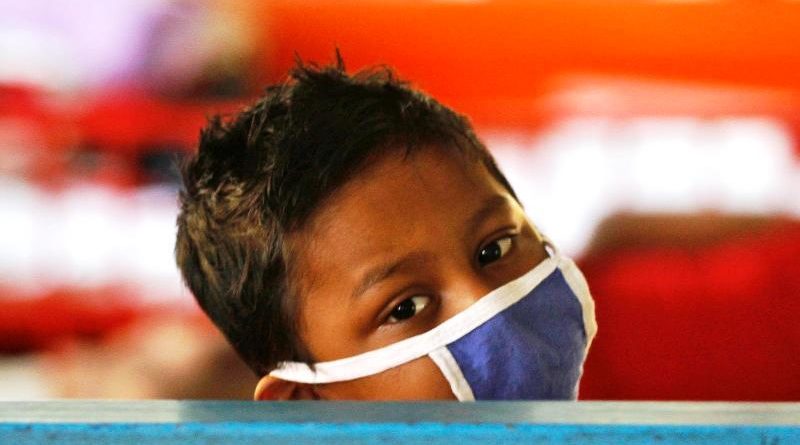Increasing Risk of Childhood Cancers in India
by Dr. Koteswara Rao, Pediatrician, Apollo Cradle & Children Hospital, Hyderabad
According to the World Health Organisation (WHO) nearly 300,000 children get diagnosed with cancer every year, though less prevalent in developed countries, it has a higher rate of curability. The same scenario looks very different and contrasting in low- and middle-income nations, where survival rates are very less.
In order to reduce the mortality and spread awareness in developing nations, WHO declared the September as Childhood Cancer Awareness Month and is a time to shine the light on the realities of childhood cancer, emphasize the importance of life-saving research, and join together to make a difference for children diagnosed. The situation is urgent – incidence rates are rising, and cancer remains the leading cause of death by disease for children.
In India, childhood cancer contributes to around 4.5 percent to 5.5 percent of the total cancer cases, as per a 2017 study published in the Indian Journal of Medical and Paediatric Oncology. It is also estimated that around 50,000 children of the country between the age group of 0-19 years are likely to surrender to this illness. In fact, it is the 9th most common causes of death among children. To understand the complexity of the disease, in 2016, the cancer registry in India for the first time looked at childhood cancers and released its findings along with the Indian Council of Medical Research (ICMR).
Types of Childhood Cancer
Blood Cancers
Leukemias- A type of blood cancer forms in the tissues of the body that make the blood cells and the bone marrow. When leukemia strikes, the body makes an abundance of abnormal white cells that do not perform their proper functions. They invade the marrow and crowd out the normal healthy blood cells, making the patient susceptible to infection and bruising.
Lymphomas – It is a type of cancer which arises in the lymph system, the body’s circulatory network for filtering out impurities. It can arise in the tonsils, thymus, bone, small intestine, spleen, or in lymph glands anywhere in the body. The disease can spread to the central nervous system and the bone marrow.
Solid Tumors
Brain Tumors-Tumors of the brain and spinal cord are the most common types of solid tumors in children. Some tumors are benign, and some children can be cured by surgery. There is a peak in incidence between the ages of 5 and 10.
Bone Cancers-The most common bone cancer is osteogenic sarcoma. Bone cancer in children occurs most often during adolescence, 85% of them have tumors on their legs or arms, half of them around the knee.
Neuroblastoma- Found only in children, neuroblastoma arises in the adrenal glands, located in the abdominal area. It attacks very young children. One-fourth of those affected show initial symptoms during the first year of life. Neuroblastoma spreads quickly, and often is discovered only after the disease is widespread. Early stages are curable by surgery alone.
Other Cancers in Children
Wilms’ Tumor- This rapidly-developing tumor of the kidney most often appears in children, usually between the ages of two and four, and is very different from adult kidney cancers. The disease often metastasizes to the lungs, and in the past, the mortality from this cancer was extremely high. However, newer therapies have been very effective in controlling it.
Retinoblastoma- a malignant eye tumor which occurs in young children and shows a hereditary pattern that accounts for only 2% of the childhood cancer cases. However, it received a great deal of attention when it was the first cancer for which researchers were able to identify the responsible gene.
Rhabdomyosarcoma- The most common soft tissue sarcoma in children, this extremely malignant neoplasm originates in skeletal muscle. Although it can occur in any muscle tissue, it is generally found in the head and neck area (including the eye socket), the genito-urinary tract, or in the extremities. Although rhabdomyosarcoma tends to grow and spread very rapidly, fortunately its symptoms are quite obvious compared to other forms of childhood cancer.
Symptoms of Childhood Cancer
Continued, unexplained weight loss
Headaches, often with early morning vomiting
Increased swelling or persistent pain in bones, joints, back, or legs
Lump or mass, especially in the abdomen, neck, chest, pelvis, or armpits
Development of excessive bruising, bleeding, or rash
Constant infections
A whitish color behind the pupil, squint or redness in the eye, shrunken or swollen eye
Nausea which persists or vomiting without nausea
Constant tiredness or noticeable paleness
Eye or vision changes which occur suddenly and persist
Recurrent or persistent fevers of unknown origin
Treatment for Childhood Cancer
The treatment of cancer in children can include chemotherapy (the use of medical drugs to kill cancer cells), Radiation (the use of radiant energy to kill cancer cells), and surgery (to remove cancerous cells or tumors). The type of treatment needed depends on the type and severity of cancer and the child’s age.
Chemotherapy: Chemotherapy is medication which is used as a complementary tool to eliminate remaining cancer cells in the body. A child or teen is usually given the chemotherapy drugs intravenously (through a vein) or orally (by mouth). Some forms of chemotherapy can be given intrathecally, or into the spinal fluid. The drugs enter the bloodstream and work to kill cancer cells. The duration of chemotherapy treatment and type of drugs that are used depend on the type of cancer the child has and his or her response to the drugs. Every child’s treatment differs, so a child may receive daily, weekly, or monthly chemotherapy treatments.
Radiation: A child who receives radiation therapy is treated with a stream of high-energy particles or waves that destroy or damage cancer cells in parts of the body to which the cancer has spread. Many types of childhood cancer are treated with radiation in conjunction with chemotherapy or surgery.
Surgery: In children with osteosarcoma and other solid tumors that haven’t spread to other parts of the body, surgery can often effectively remove cancer when used in combination with chemotherapy and/or radiation.
Bone Marrow Transplants: Bone marrow is a spongy tissue inside certain bones of the body that produces blood cells. If a child has a type of cancer that affects the function of blood cells, a bone marrow transplant (in conjunction with chemotherapy to kill the defective cells) may allow new, healthy cells to grow. Bone marrow transplant is also sometimes used to treat cancer that does not involve blood cells because it allows doctors to use higher doses of chemotherapy than would otherwise be tolerated.
Targeted therapies: In recent years, new drugs that target specific parts of cancer cells have been developed. These targeted drugs work differently from standard chemotherapy drugs. They sometimes work when chemo drugs don’t, and they often have different (and less severe) side effects. These drugs are very effective at controlling the leukemia for long periods of time in most of these children.
Need Support
Childhood is a time of wishes, desires and dreams of endless possibilities. But for children faced with cancer it is a battle for and with life. They face it with unflinching courage and an acceptance of their circumstances that humbles us.
These children are an inspiration in their ability to put aside their pain and sorrow and make the best of whatever life has to offer. We have much to learn from them-They deserve the best means the best possible treatment (to deal with the illness), care (support with social and psychological impact of the illness) and assistance to reintegrate back into the society.




